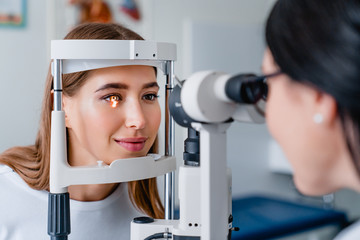
Overdiagnosis Epidemic: How Cancer Screening May Be Doing More Harm Than Good
Imagine going through grueling cancer treatments--surgery, radiation, chemotherapy--only to later discover that your "cancer" was never going to progress or threaten your life. For many people diagnosed by cancer screening, this devastating scenario is a reality. A new study reveals the shocking scope of overdiagnosis across several common cancer screening programs.
Cancer screening aims to detect disease at an earlier, more treatable stage to reduce suffering and death from cancer. But a comprehensive overview of randomized trials published in the journal Cancer Epidemiology uncovers a major harm of screening--overdiagnosis.1 Overdiagnosis refers to the detection of "cancers" that would never progress to cause symptoms or threaten an individual's life.2,3 Since clinicians can't determine which cancers will be harmless, overdiagnosis subjects patients to needless fear, anxiety, and medical interventions like biopsies, surgery, radiation and chemotherapy.3
The analysis encompassed 19 trials involving over 3 million participants screened for breast, lung, liver, prostate, and ovarian cancers. The researchers estimated that 38% of prostate cancers detected by PSA screening, 30% of lung cancers detected by low-dose CT scans, 27% of breast cancers detected by mammography, 27% of liver cancers detected by ultrasound and biomarkers, and 17% of ovarian cancers detected by CA-125 blood tests were overdiagnosed.1 This means that if 1000 individuals had one of these cancers detected by screening, between 170 and 380 of them have a "cancer" that would never have harmed them.
However, most of these individuals will likely still undergo treatment. The physical harms of cancer treatment are well-known, including pain, fatigue, nausea, and long-term toxicities to major organs.4 But the psychological toll of overdiagnosis is also severe. Studies show heightened anxiety, depression and fear of cancer recurrence among survivors, even years after treatment ends.5
Shockingly, the harms of overdiagnosis may extend beyond psychological distress and unnecessary treatment. Another study by Fang et al. found that in the weeks immediately following a cancer diagnosis, patients had a significantly elevated risk of death from both suicide and cardiovascular events compared to cancer-free individuals.6 The relative risk of suicide was 12.6 times higher in the first week and 3.1 times higher over the first year after diagnosis. For cardiovascular death, the relative risk was 5.6 in the first week and 3.3 during the first 4 weeks. The risk was especially high for cancers with a poor prognosis.
Importantly, this spike in mortality risk could not be explained by preexisting mental health or heart conditions, suggesting that the cancer diagnosis itself likely triggered these adverse outcomes through nocebo effects and iatrogenic harms.6 The nocebo effect occurs when negative expectations lead to adverse outcomes, essentially the flip side of the placebo effect.7 In this case, the shock and fear induced by the cancer diagnosis likely directly worsened some patients' mental and physical health. Additionally, the findings hint at possible iatrogenic harms, meaning unintended adverse effects caused by the medical care itself rather than the underlying condition.8
Some experts argue that we should re-conceptualize our definition of cancer altogether. A working group convened by the National Cancer Institute recommended that lesions currently labeled as cancer should be reclassified based on their potential to cause harm.9 Growths with very low potential for progression could instead be called "indolent lesions of epithelial origin" to reduce overtreatment. In GreenMedInfo.com founder Sayer Ji's book REGENERATE: Unlocking Your Body's Radical Resilience with the New Biology an entire chapter is dedicated to the topic of cancer, and a large part of that is focused on overdiagnosis and overtreatment.
So what can be done to address cancer overdiagnosis? For cancers with a high probability of overdiagnosis, watchful waiting may be appropriate, rather than rushing to immediate treatment.10 Watchful waiting involves actively monitoring the cancer over time with periodic scans and tests to see if it is rapidly progressing. If it remains slow-growing, treatment can be delayed or avoided. Some patients also turn to natural healing modalities like nutritional changes, supplements, stress reduction, and exercise to support their immune function while undergoing observation.11 The GreenMedInfo.com Cancer Database has over 13,000 studies on the topic of natural approaches to cancer prevention and treatment you can view here.
Screening for and treating mental distress may also help mitigate the unintended harms of diagnosis. Providers should have balanced discussions with patients about realistic prognoses, emphasizing hope when appropriate while not minimizing potential harms. Stronger social support systems for those with a new cancer diagnosis may also buffer against psychological suffering.
Fundamentally, the results of these studies should make us question whether finding more cancers is always better. Hundreds of thousands of patients may be diagnosed and treated for cancer unnecessarily every year.1 Cancer screening guidelines need to be reevaluated to account for the serious harms of overdiagnosis. Providers and patients should be fully informed about the risks of overdiagnosis and have candid discussions before engaging in screening. When cancer is found, the option of watchful waiting should be presented when appropriate. Critically, diagnosis must be accompanied by robust psychological and social support to minimize unintended consequences.
As we strive to lessen the immense burden of cancer, we must recognize that more diagnosis is not always better. Attending not only to the biological dimensions of cancer but also to the mental suffering a diagnosis engenders is crucial. By balancing early detection with an acknowledgment of overdiagnosis and support for the whole patient, physically and emotionally, we can begin to stem the epidemic of overdiagnosis. It's time to reexamine our approach to cancer prevention and treatment with a focus on avoiding unnecessary harm. Only then can we ensure that screening programs are truly serving the goal of reducing suffering and saving lives.
------------------------------------------------------------------------------------------------
For nurses working with cancer patients, or those who want to learn more about cancer and cancer treatments, check out the following courses:
- Current Concepts in Chemotherapy
- Emergency Department Nursing Considerations for Oncology Patients
- Immunotherapy in Cancer Treatment
Pedagogy's courses are available for purchase by the individual or facility. For individuals, register with us to create your username and password, click on the course title of interest and then click the Purchase button. For a complete listing of all our online continuing education courses, including the largest selection of infusion continuing education courses offered online, click here!

